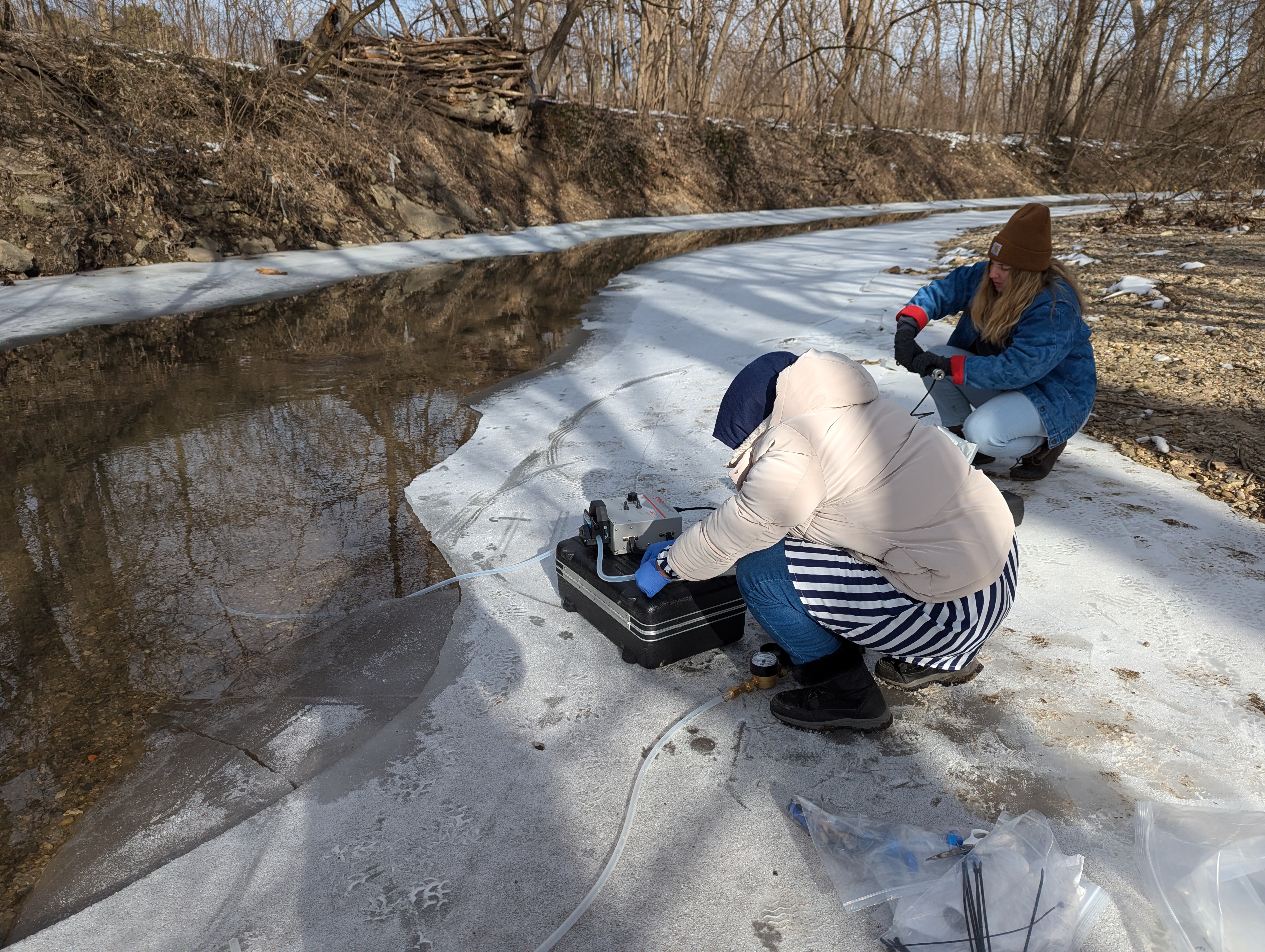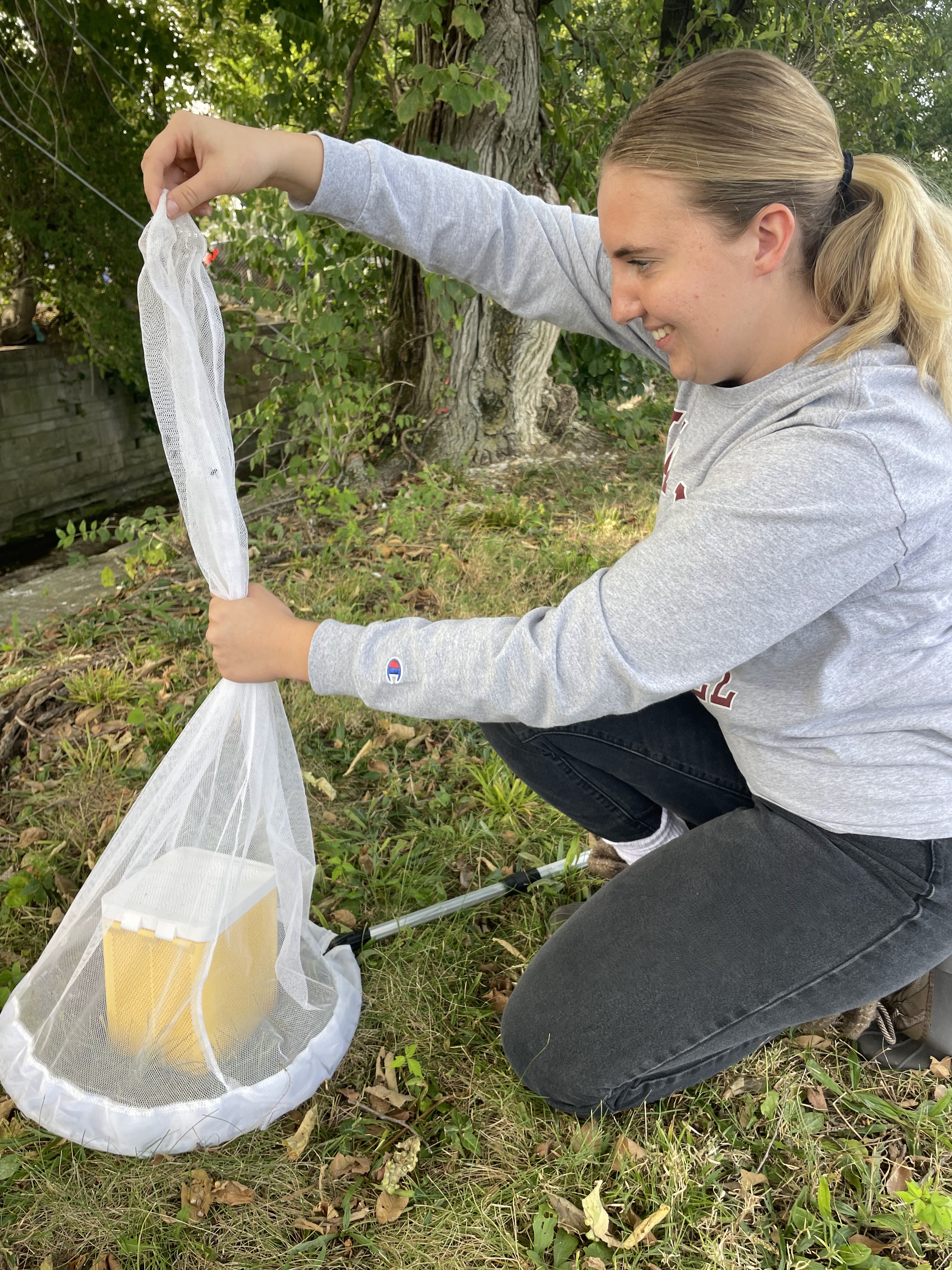What can common flies and river water tell us about our health? A lot, according to Drew Capone, Ph.D., assistant professor in the Department of Environmental and Occupational Health.
Since January of this year, Capone and his students have been collecting data on how the DigIndy project in Indianapolis —a 28-mile-long network of tunnels being built 250 feet beneath the city to divert at least 95 percent of combined sewer overflows (CSOs)—is currently making an impact on the environment. In late July, Capone and his team were awarded an R21 grant from the National Institutes of Health in the amount of $435,875 to continue the project for the next two years and finance the microbiological analysis of the collected samples.

"My students are analyzing water and flies this year and will continue this work next year to determine the impact of this work on reductions in environmental fecal contamination in Fall Creek, Pleasant Run, and the White River," says Capone. "We will be combining our empirical data with risk assessment to estimate the impact on human health attributable to the intervention."
Capone says he initially became interested in DigIndy through a collaboration with his colleague Christine Picard, Ph.D., at IU Indianapolis. Capone’s reanalysis of Picard’s team’s project that used flies for biodiversity studies found there was a significant amount of human DNA carried by flies near the discharge points in the city.
"This is suggestive that they are feeding on human fecal waste, which indicates when sewers combine the overflow in the city there is waste getting into the water and surrounding environment that flies are able to feed on," says Capone. "I met with the Marion County Health Department, and they have a water quality division interested in this work, and the Indiana Department of Environmental Management was also interested in the impacts of this really large investment in infrastructure."
Ph.D. student Fatema Akter Mahua and member of Capone’s Lab shares that she was drawn to the DigIndy impact assessment project because of her strong interest in environmental microbial surveillance and antimicrobial resistance.
"CSOs are a significant source of water contamination that can spread resistant bacteria," says Mahua. "This project has given me a unique opportunity to examine how real-world infrastructure, like the DigIndy tunnel system, can reduce microbial contamination in water bodies and help protect public health in surrounding communities."
Mahua’s responsibilities include water sampling from upstream and downstream sites across the White River, Fall Creek, and Pleasant Run, followed by laboratory testing for E. coli. She plays an essential role in coordinating field logistics, maintaining data records, analyzing data, and writing reports, which has given her valuable hands-on experience in methodically evaluating how climate and sanitation infrastructure affect public health.
"The most fulfilling part of this project has been connecting our field and lab work with a real-world infrastructure intervention that can improve community health," adds Mahua. "Ultimately, these experiences are shaping me into an environmental health scientist dedicated to protecting communities by addressing the challenges that lie at the intersection of water, sanitation, and antimicrobial resistance."

Team member and fourth year undergraduate student Allison Holder says that her passion for research and public health led her to become involved with this project, engaging in field sampling/water collection and subsequent laboratory work and data analysis. This experience is directly supporting her goals to pursue a Master of Public Health degree in Epidemiology and Biostatistics after graduation.
"What I find most fulfilling about this work is that it addresses real-world public health challenges," says Holder. "Understanding how large-scale infrastructure projects affect water quality is not only meaningful but also essential for protecting community health."
Holder also expresses her gratitude for the mentorship and support she has received from Capone and the other members of the lab.
"Their collaborative approach has helped me grow both academically and professionally and has been essential in guiding me toward my career goals in public health," says Holder. "What surprised me most is the level of detail, organization, and precision required for lab work along with the creativity involved in scientific research."
For more inspiring stories about SPH-B students, faculty, and staff, visit go.iu.edu/48bx.


